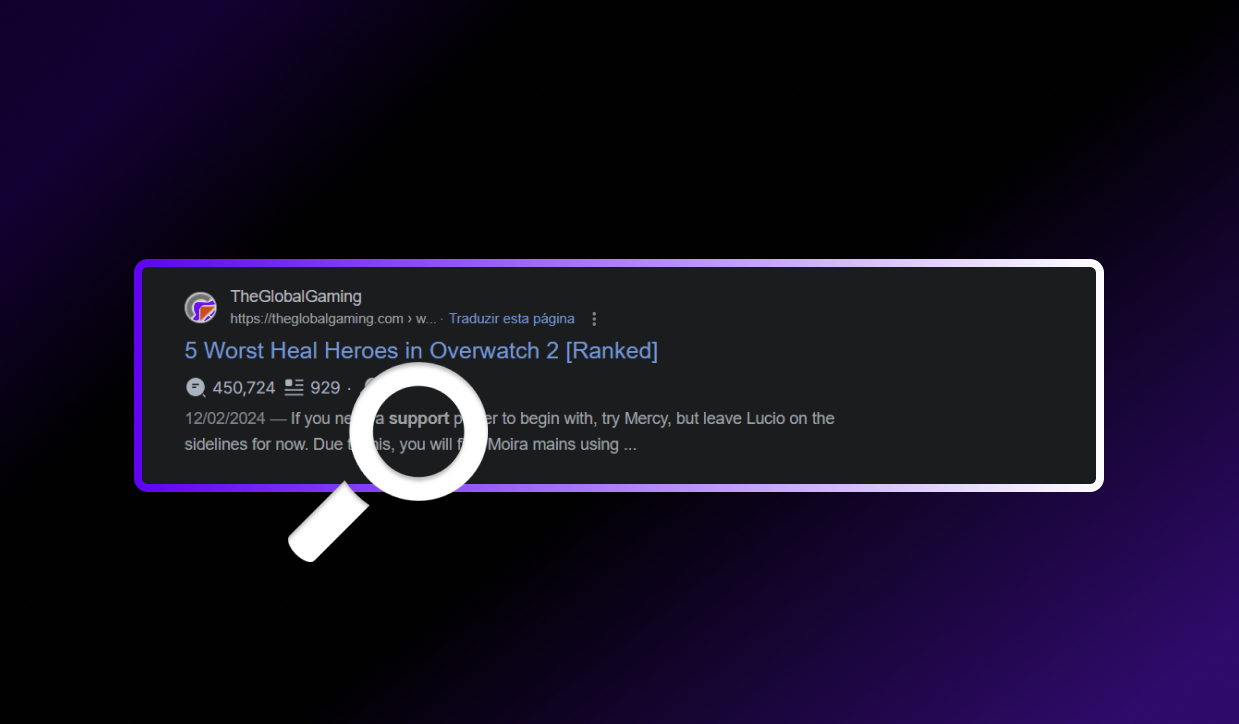Struggling to optimize meta descriptions that bring valuable clicks? Check out my favorite tricks for a better CTR percentage to craft clear, valuable keyword placement.
Strategically Use Keywords
In any meta description, using the primary keyword (and perhaps a secondary if it flows) will guarantee you both user and search engine attention. In Content SEO, this is crucial for getting anyone even to check out your cool new blog. Here are a few tips on strategy:
- Targeted Placement: Ensure the targeted keywords appears early in the description to quickly catch both the users and search engines attention faster.
- Search Intent Alignment: Choose keywords that better connect with the users search intent behind user queries.
- Keyword Variation: Incorporate secondary keywords or a variant of such to broaden user reach without the risk of keyword stuffing.
You target keyword should clearly make it somewhere in your meta, this is just a fact. However something as small as incorporating it naturally in the beginning of the description will boost your chances of impressions.
Whats better than impressions? Clickthrough Rate [CTR]. Once you add subtle hints of secondary keywords that match the users search intent, you will see a huge growth in clicks and even page time. Guaranteed.
Craft Meta Descriptions with Precision
Once you got your keywords lined up (I suggest using SEMrush or Ahrefs to compare competitor keywords and secondary keywords), its time to stay within the boundaries. Meta descriptions have a cut-off point, so you need to ensure your message is short, clear, and valuable.
- Character Limit: The cut off for search engine results pages (SERPs) is 155-160 characters. With this in mind, try to keep your description between this length.
- Clear Summary: Summarize your pages content concisely, giving them a clear expectation of what they’ll find (reduces bounce-rates).
- Value Proposition: Highlight something unique or valuable about the page that sets its benefits apart from competitors.
This may take abit of research (research is literally 85% of an SEO’s job), but seriously, take note of your competitors and how they win views. Meta descriptions may seem easy at first, but the more you research, the more you realize: Every. Word. Matters.
Highlight Uniqueness for Each Page
Being unique is what makes anything stand-out, including your article pages. To be unique, you must consider a few strategies to begin creating innovative reach. Here are some tips:
- Avoid Duplication: Make sure you NEVER copy a meta description. This will help maintain distinctiveness in SERPs.
- Page-Specific Content: Tailor each description according to unique/specific content and offer of each page.
- Reflect Page Goals: Highlight the one goal or value that you know your page brings that clearly sets it apart from competitors.
Here is a good example from a bad meta description with lack of uniqueness, to good with unique, tailored information based on the pages content:
| Bad Meta Description | Good Meta Description |
| Enjoy your visit in Portugal with these 10 best Porto wines found in Porto. | Ferreira Vinho Branco and Mateus Rosé are just two of the 10 best Port wines you can find for cheap in Porto! |
Of course, do not go too far from the users intent for the sake of being different. Consider secondary keywords, research what people actually like to know based on Reddit forums or Quora. This can make you stand out as you actually provide an answer to a question/problem.
Want to see some badass travel meta’s that brought my CTR from 1% to 5%? Check out my travel blog at Charlee Travels!
Drive Click-Throughs with Engaging Language
To make your meta description spicy, I highly suggest using engaging language that encourages curiosity. To do this, you should consider strong action words, questions, and highlight benefits.
- Actionable CTA: Use strong call to action (CTA) encouraging users to click, read more, or to discover something new.
- Curiosity Piquing: Pose a question or make a statement that makes users want to learn more about whats on your page.
- Benefits First: Emphasize on the benefit or solution the user will gain by clicking to enter the page.
Here is an example with a strong CTA (offering benefits):
| Bad Meta Description | Good Meta Description |
| How to Get Free Skins CSGO | Getting free CSGO skins might seem unrealistic, but methods such as Freecash or using weekly drops might just make it possible! |
Users are rather simple. What is difficult is pin-pointing exactly what they want. If you are someone who really understands the niche and current trends in the questions you are answering, you will most likely find it easy to create great CTA’s and questions.
Want to see some cool gaming articles with meta’s like above? Check out my author page at TGG!
Feature Your Brand
Last but not least, featuring your brand is not always needed, and sometimes can be.. I dont know.. obvious? However, finding a great way to implement strategic end placement can boost brand trust and recognition.
- Brand Recognition: Implement your brands name within the meta so search engines and users will begin to recognize your authority.
- End Placement: Ensure to place the Brand at the end to keep the focus on the content offer.
- Consistent Branding: Make sure the use of the brand name is consistent across all meta descriptions for uniformity and professionalism.
Typically, this is a step I do not take often even though it has been proven to be a great way to gain trust. This is not, however, always a deciding factor if your website is new and still gaining authority.
Always keep in mind a good strategy plan when creating meta descriptions. At first it may seem like time wasted, but I promise you, the small annoying habits pay off in the end!




